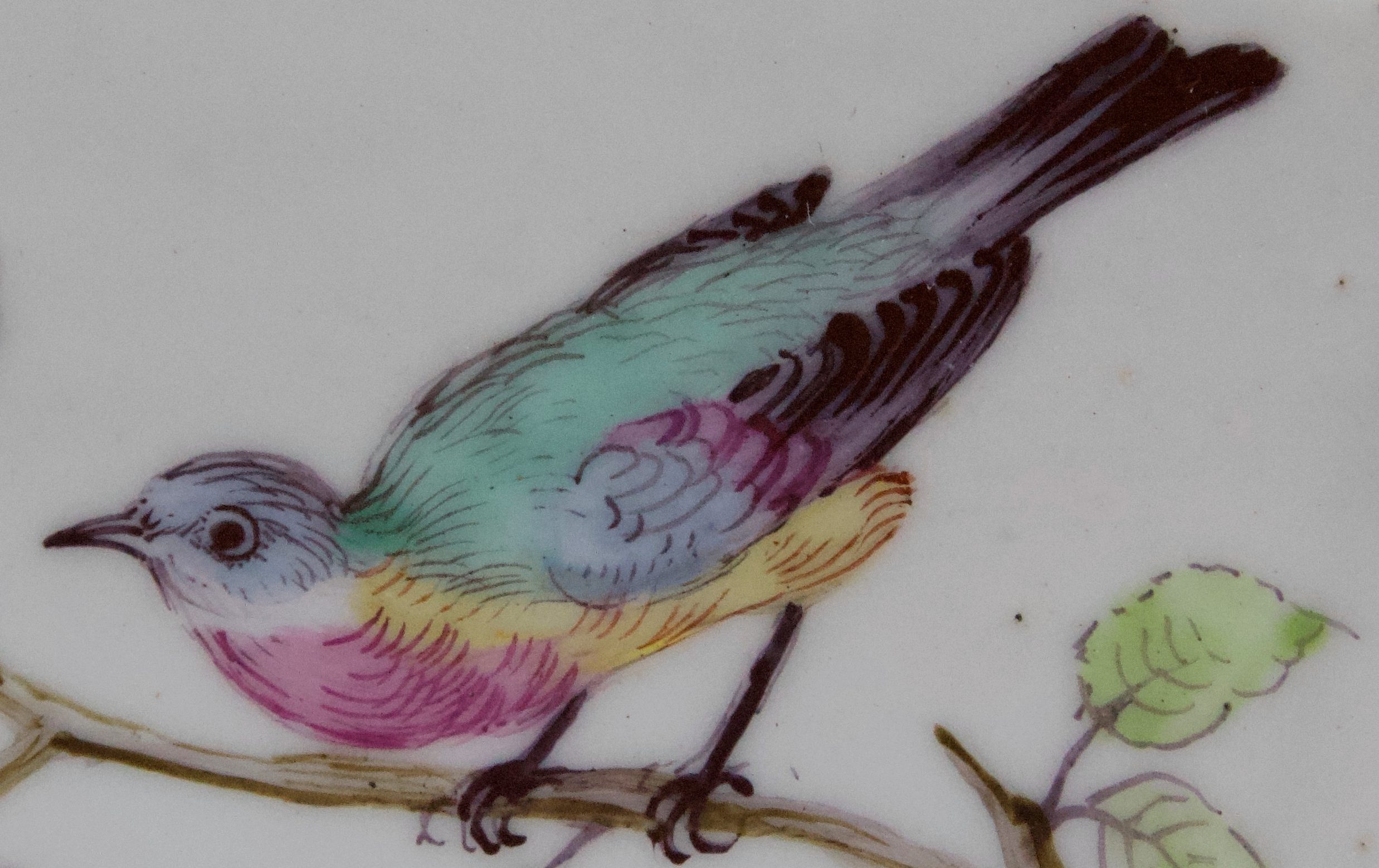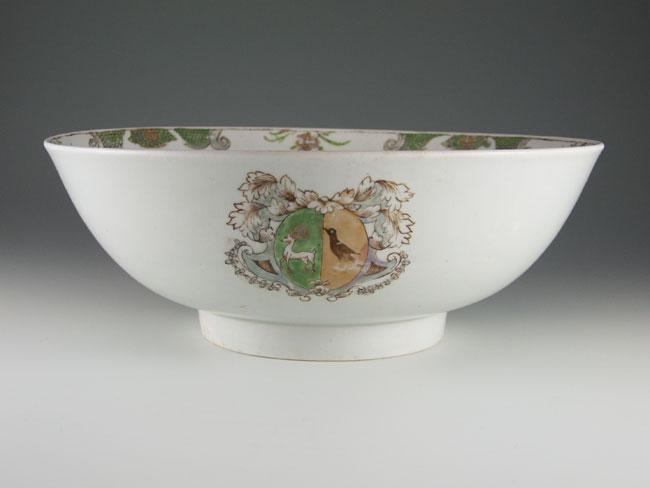A rare and important William Reid armorial Punch Bowl, circa 1756-58
The exterior of this rare and important Liverpool punch bowl is painted in three places with a marital coat of arms surrounded by mantling. The sepia outlines are filled with gilt decoration and green, light blue and pink enamels. The arms are also positioned on the interior base. The interior border is of scrolled caillouté panels and flower sprays of the same restrained palette.
One possibility for the sinister (wife’s) coat is Corbett, as the black raven or crow on a gold ground resembles the or, a raven sable coat of that family. The dexter (husband’s) coat, vert, a stag trippant, with antlers and hooves or may belong to one of a number of coats of arms creatively ascribed to Welsh lords and chieftains, most of whom lived in pre-heraldic times and certainly before heraldry reached Wales. They are used by families with a traditional male-line descent from the lord to whom the arms are attributed. This particular coat is ascribed to Llywarch Holwbwrch, whose arms are used by families named Lloyd, Fowbery, and perhaps others.
Family coats of arms are terribly rare on Liverpool porcelain, and unrecorded on both Reid and Gilbody.
Provenance: With Simon Spero, London; the Crane Collection; an English Private Collection.
Exhibited: English Ceramic Circle Armorials exhibition (as Gilbody, with the arms of the Earl of Hume), held at the Haughton Gallery, London, 2008.
This punch bowl is illustrated in Hillis, Liverpool Porcelain 1756-1804, page 61, plate 3.111.
Condition: A section has been out of the rim and previously re-attached with staples. This section was mostly undecorated on the exterior. The staples have since been removed and the piece sympathetically restored. There is surface wear consistent with use, and wear to the gilt decoration, mostly to the arms on the interior base. Small patches of biscuit porcelain are visible on the outside of the foot, probably from where the workman held the bowl as it was dipped into the glaze.
Dimensions: Diameter 25 cm
Liverpool Porcelain 1756-1804, Maurice Hillis (2011).
Liverpool Porcelain of the Eighteenth Century, Bernard M. Watney (Richard Dennis, 1997).
With thanks to members of the International Heraldry Society.



















